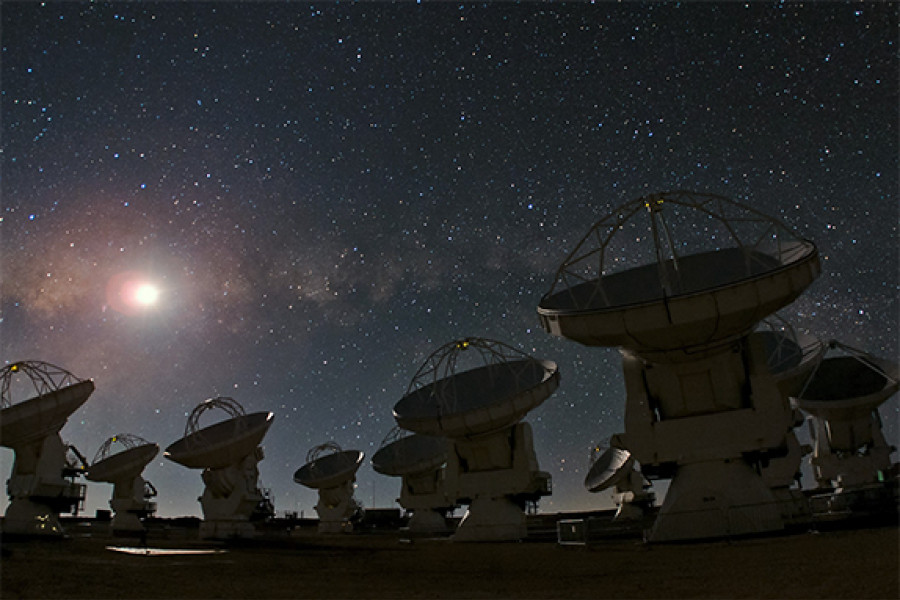A new interdisciplinary project between the Massachusetts Institute of Technology (MIT) and the Universidad de Santiago de Chile (Usach) was awarded the MIT Global Seed Fund. This project, entitled “AI Applications for Understanding Planet Formation Dynamics”, aims to advance the analysis of astronomical data using artificial intelligence techniques.
The recently awarded MIT Global Seed Fund will enable collaboration between Professor Richard Teague’s group at the Planet Formation Lab in the Department of Earth, Atmospheric and Planetary Sciences at MIT and the Millennium Nucleus on Young Exoplanets and their Moons (YEMS) at Usach, led by Professors Sebastián Pérez and Fernando Rannou. This fund, amounting to about 20 thousand dollars, will facilitate academic and student mobility, complementing interdisciplinary efforts in thesis projects at the Ciras Center of our campus.
The project, “AI Applications for Understanding Planet Formation Dynamics”, focuses on the use of artificial intelligence to improve reconstruction and image processing of protoplanetary disks observed by the Atacama Large Millimeter/submillimeter Array (ALMA) Observatory. These disks, considered the birthplaces of planets, have complex data sets that require advanced techniques for their analysis.
The collaboration between Dr. Teague and Dr. Perez began in October 2023, when they identified common interests in the dynamics of protoplanetary disks and how important they are for understanding planetary formation. This project seeks to leverage the complementary strengths of both researchers: Dr. Teague, in complex algorithms for data analysis, and Dr. Perez, in hydrodynamic modeling of planet-disk interactions.
“This project is a meaningful step towards the integration of artificial intelligence in astrophysics,” commented Sebastian Perez. “The combination of our skills and collaboration with computer engineers will enable advances in analyzing complex data more efficiently and accurately,” he said.
The project will involve several students from both institutions, who will focus on developing AI algorithms for data analysis and will have the opportunity to participate in academic exchanges. “We hope to involve several students from both MIT and Usach in the development of AI algorithms for data analysis,” Perez added. “These students will have the opportunity to participate in academic exchanges that will foster collaboration and interdisciplinary learning,” he said.
They anticipate several publications in high-impact journals and the development of open-source software for the scientific community. “Concrete developments will include new image reconstruction algorithms and data analysis methods, with the potential to make significant contributions to our understanding of the intricate processes underlying planetary formation,” Perez said.
The $20,000 fund will be used equitably to fund research exchanges and fellowships to explore the applicability of modern AI-assisted techniques in the study of planetary formation. This cross-disciplinary collaboration has the potential to make significant contributions to our understanding of the processes underlying planetary formation, strengthening the intersection between observational analysis and theoretical modeling in astrophysics.
For more information on past projects funded by the MIT Global Seed Fund, see MIT Global Seed Fund Winners.


